This article was co-authored by Alexander Peterman, MA. Alexander Peterman is a Private Tutor in Florida. He received his MA in Education from the University of Florida in 2017.
There are 8 references cited in this article, which can be found at the bottom of the page.
wikiHow marks an article as reader-approved once it receives enough positive feedback. This article received 64 testimonials and 82% of readers who voted found it helpful, earning it our reader-approved status.
This article has been viewed 986,525 times.
Diagramming sentences might seem complicated at first, but you'll quickly get the hang of it. Sentence diagramming enables you to visually understand the function of every part of a sentence, which helps you construct better sentences. Once you understand the essentials, diagramming a sentence can be like completing a Sudoku or a crossword puzzle.
Steps
Parts of Speech
-
1Review the parts of speech. Understanding what nouns, pronouns, verbs, adjectives, conjunctions, prepositions, etc. are is essential to sentence diagramming.[1]
- Nouns are words representing people, places, things, or ideas.
- Dog, computer, Haiti, teacher, and dream
- Pronouns are words like he, she, they, it, or who, which represent nouns.
- Verbs are action words.
- To run, to swim, and to fly
- Adjectives are description words that apply to nouns.
- Blue in blue water, big in big baby, and smelly in smelly garbage
- Adverbs, like adjectives, are description words; however, adverbs apply to verbs, adjectives, and other adverbs.
- Quickly in quickly run, quite in quite slowly, and very in very beautiful
- Participles are words formed from verbs that act like adjectives or nouns.[2]
- Working in working farmers, flying in flying birds, and flooded in flooded basement
- Conjunctions join clauses or words within the same clause.
-
And, but, or, for, nor, so, and yet
- Joining independent clauses: "Jalissa took the car keys, and she drove to work."
- Joining words in the same clause: "Arturo likes apples and oranges equally."
-
And, but, or, for, nor, so, and yet
- Prepositions tell you how nouns in a sentence relate to one another. There are many prepositions.
- Above, on, in, between, through, and to
- Articles modify nouns differently than adjectives. They help make nouns more specific.
- a, an, and the
- Nouns are words representing people, places, things, or ideas.
-
2Parse your sentence to find the different parts of speech. It is much easier to diagram a sentence if you already have an idea of the grammatical contents of that sentence. You can write out and label the different words in the sentence, or you can simply note mentally which words serve what purpose. Some words are difficult to parse, so save those for last.
-
Determine your subject and verb. These are the foundations of a sentence, and thus the foundations of a sentence diagram. The subject is a noun or pronoun that is performing the verb. The verb is the action of the sentence. The subjects of the following sentences are bold, and the main verbs are italic.
- Children will listen.
- Though John doesn't like broccoli, he will eat other vegetables.
- Vegetables disgust Felipe.
- Felipe was disgusted by vegetables.
- Ira gave Cho her necklace.
- Find the direct object if there is one. Direct objects are nouns or pronouns that are the recipients of the verb. From the above examples, Children will listen does not have a direct object; but, Vegetables disgust Felipe does. Felipe is the direct object of the verb disgust.
-
Determine your subject and verb. These are the foundations of a sentence, and thus the foundations of a sentence diagram. The subject is a noun or pronoun that is performing the verb. The verb is the action of the sentence. The subjects of the following sentences are bold, and the main verbs are italic.
Diagramming
-
1Draw a horizontal line with a small vertical line through the middle. To the left of the vertical line, write your subject. To the right of the vertical line, write your verb. This is the most basic complete sentence.[3]
-
2
-
3Place indirect objects beneath the verb. In general, indirect objects could take a preposition and so are drawn with a diagonal line coming off of the word they modify. See step 6 for prepositions.[4]
- In the above sentence, The farmers gave their kids fresh vegetables, farmers is the subject, gave is the verb, vegetables is the direct object, kids is the indirect object, the is an article, their is a possessive pronoun, and fresh is an adjective modifying vegetables.
-
4Draw a slash if there is a predicate nominative or predicate adjective. A predicate nominative is a noun, pronoun, or adjective that refers to the subject. The verb preceding the predicate nominative or adjective is usually a linking verb, such as the forms of to be (is, are, was, etc.) or sense words (looks, smells, tastes, etc.). To the right of the slash, write the predicate nominative or adjective.
- In the above sentence, Vegetables are disgusting, vegetables is the subject, are is a linking verb, and disgusting is the predicate adjective.
- Note that pronouns following linking verbs should be in the nominative case: This is she or It is I and not This is her or It is me.
-
5Place adjectives, adverbs, articles, and possessives on diagonal lines below the words they modify.
- In the above sentence, The green vegetables are always disgusting, vegetables is the subject, are is the linking verb, disgusting is the predicate adjective, green is an adjective modifying vegetables, the is an article, and always is an adverb modifying disgusting.
- Participles are diagrammed similarly to adjectives. Draw the participle as a curved word on a bent, slanted line beneath the word it modifies. In the above sentence, Working farmers enjoy vegetables, working is a participle modifying farmers, which is the subject; enjoy is the verb; and vegetables is the object.
- In the above sentence, The green vegetables are always disgusting, vegetables is the subject, are is the linking verb, disgusting is the predicate adjective, green is an adjective modifying vegetables, the is an article, and always is an adverb modifying disgusting.
-
6Begin prepositions like you would adjectives: Draw a diagonal line down. The object of the preposition goes on a horizontal line coming off the preposition line.
- In the above sentence, The kids threw the vegetables in the trash, kids is the subject, threw is the verb, vegetables is the direct object, in is a preposition, trash is the object of the preposition, and all three thes are articles.
-
7Determine how any conjunctions are being used.
- If the sentence is a compound sentence made up of two independent clauses, the coordinating conjunction will connect via a bent, broken line.[5]
- In the above sentence, The green vegetables are always disgusting, and I hate them, there are two independent clauses. Vegetables is the subject of the first clause, are is a linking verb, disgusting is the predicate adjective, the is an article, green is an adjective, and always is an adverb. I is the subject of the second clause, hate is the verb, and them is the direct object (it is a pronoun whose antecedent is vegetables). The two clauses are linked by the coordinating conjunction and.
- If the sentence is a simple sentence and the conjunction is joining words within it, you will split the line and join it by a broken line, or you will join two existing lines with a broken line.
- In the first of the above sentences, I like fruits and vegetables, I is the subject, like is the verb, fruits and vegetables are the two direct objects, and and is the conjunction joining the direct objects.
- In the second of the above sentences, Green and yellow vegetables are disgusting, vegetables is the subject, are is the linking verb, disgusting is the predicate adjective, always is an adverb modifying disgusting, green and yellow are adjectives modifying vegetables, and and is the conjunction joining the adjectives.
- If the sentence is a compound sentence made up of two independent clauses, the coordinating conjunction will connect via a bent, broken line.[5]
-
8Draw appositives in parentheses next to the words they modify. Appositives are words that redefine or rename other words. Appositives can be separated in sentences using colons, dashes, or parentheses and do not change the meaning of the sentence. Adjectives and articles that apply to the appositive are drawn beneath the appositive word.
- In the above sentence, An unabashed herbivore, I like fruits and vegetables, I is the subject, like is the verb, fruits and vegetables are direct objects, and joins the direct objects, herbivore is in apposition to I, an is an article, and unabashed is an adjective modifying herbivore.
-
9Place infinitive phrases on their own line, called a pedestal, beginning with a diagonal. Infinitives are the basic forms of verbs, often beginning with the word to, as in to see or to walk or to eat.[6]
- In the above sentence, I like to eat vegetables, I is the subject, like is the verb, to eat vegetables is an infinitive phrase made up of the verb to eat and the object vegetables.
-
10Draw a staircase for gerunds. Gerunds are verbs ending in -ing that act as nouns, but often take direct objects. They are usually drawn on a pedestal.[7]
- In the above sentence, Eating vegetables is good for you, eating vegetables is a gerund phrase made up of the gerund eating and the object vegetables, is is a linking verb, good is the predicate adjective, for is a preposition, and you is the object of the preposition.
- Gerunds can also function as objects of prepositions. When functioning as the object of a preposition, gerunds do not need a pedestal.
- In the above sentence, You can achieve a healthier lifestyle by eating vegetables, You is the subject, can achieve is a verb phrase, lifestyle is the direct object, by is a preposition, eating vegetables is a gerund phrase made up of the gerund eating and the object vegetables, healthier is an adjective modifying lifestyle, and a is an article. See Tips below for more information on verb phrases.
-
11Draw noun phrases on pedestals. That, and other expletives like which, can introduce a noun phrase.[8]
- In the above sentence, I wish that she ate more vegetables, I is the subject; wish is the verb; that she ate more vegetables is a noun clause introduced by the expletive that and made up of the subject she, the verb ate, the direct object vegetables, and the adjective more.
- Noun phrases do not always need an expletive. Sometimes it is simply understood, as in the sentence I wish she ate more vegetables. When the expletive is understood, draw an X in parentheses where the word would go.
Community Q&A
-
QuestionHow do you diagram "I am secretly correcting your work"?
 Community AnswerUse the instructions in this article to try it yourself! Hint: "am correcting" is a verb phrase (see Tips) and "secretly" is an adverb modifying the verb phrase; and "your" is a possessive pronoun (see step 3 for an example of a possessive pronoun).
Community AnswerUse the instructions in this article to try it yourself! Hint: "am correcting" is a verb phrase (see Tips) and "secretly" is an adverb modifying the verb phrase; and "your" is a possessive pronoun (see step 3 for an example of a possessive pronoun). -
QuestionHow do I diagram a sentence with the word "which" in it?
 Community Answer"Which" may be either an adjective or a pronoun depending on how it's used. For example, in the sentence "I couldn't decide which cat I like more." which is a relative pronoun denoting a noun clause. In this sentence, "which cat I like more" is acting as a direct object. However, it functions as a clause. When used as a pronoun "which" is often seen in questions where it shows a lack of particular direction, and the predicate is what shows the asker asking for that direction. For example, in the sentence "Which is it?" which is acting as the subject itself. However, it doesn't have to be in a question format, as seen in the phrase "which it is."
Community Answer"Which" may be either an adjective or a pronoun depending on how it's used. For example, in the sentence "I couldn't decide which cat I like more." which is a relative pronoun denoting a noun clause. In this sentence, "which cat I like more" is acting as a direct object. However, it functions as a clause. When used as a pronoun "which" is often seen in questions where it shows a lack of particular direction, and the predicate is what shows the asker asking for that direction. For example, in the sentence "Which is it?" which is acting as the subject itself. However, it doesn't have to be in a question format, as seen in the phrase "which it is." -
QuestionHow do you diagram multiple subjects?
 Community AnswerSee step 7 for conjunction examples. Each subject would get its own line and would be connected by verticle dashed lines, one of which probably has a conjunction written on it. It depends on the specific sentence, but these lines would then be joined to the remainder of the sentence.
Community AnswerSee step 7 for conjunction examples. Each subject would get its own line and would be connected by verticle dashed lines, one of which probably has a conjunction written on it. It depends on the specific sentence, but these lines would then be joined to the remainder of the sentence.
References
- ↑ https://www.english-grammar-revolution.com/diagramming-the-parts-of-speech.html
- ↑ https://webapps.towson.edu/ows/verbals.html
- ↑ https://grammar.yourdictionary.com/sentences/diagramming-sentences.html
- ↑ https://wac.colostate.edu/books/grammar/chapter7.pdf
- ↑ https://web.cn.edu/kwheeler/diagram_gram15.html
- ↑ http://www.german-latin-english.com/basicdiagrams51-55.htm
- ↑ http://www.german-latin-english.com/basicdiagrams51-55.htm
- ↑ http://www.german-latin-english.com/basicdiagrams51-55.htm
- ↑ https://edu.gcfglobal.org/en/grammar/contractions/1/
About This Article
To diagram a sentence, start by drawing a horizontal line with a vertical line through the middle. Next, put your subject to the left of the vertical line and the verb to the right. If the sentence contains a direct object, draw another vertical line that stops at the horizontal line. Then, add the direct object on the right-hand side. You can also place indirect objects beneath the verb. For adjectives and adverbs, put them on diagonal lines coming down from the words they modify. For tips on how to diagram prepositions and conjunctions, read on!
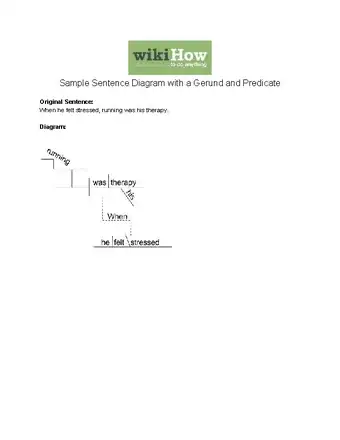
















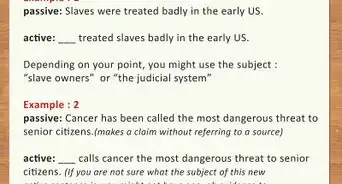

-Writing-Step-16.webp)
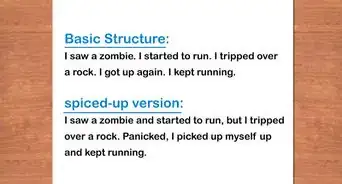
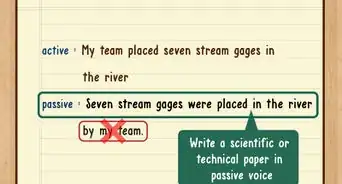
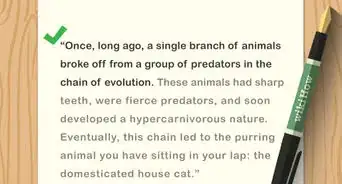
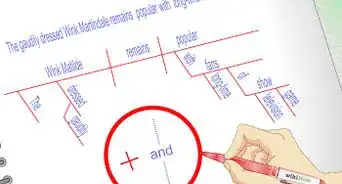
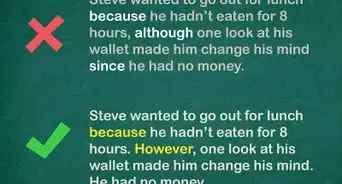
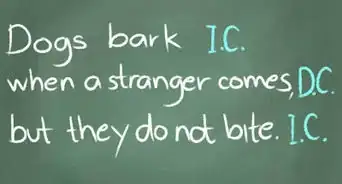
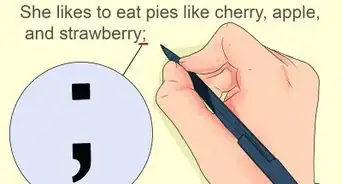


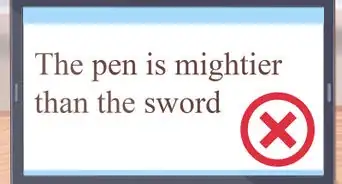











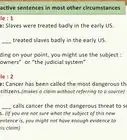
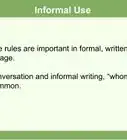
-Writing-Step-16.webp)


































